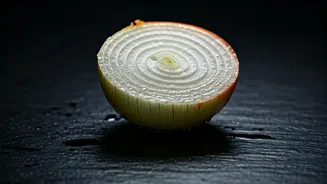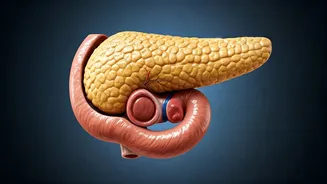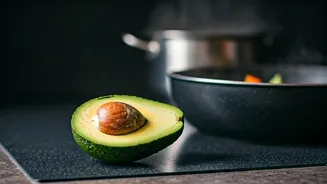The Tearful Truth
The seemingly simple act of slicing an onion triggers a complex cascade of events that leads to tears. Onions contain a unique combination of compounds,
including amino acid sulfoxides and enzymes, that, when mixed, initiate a chemical reaction. This reaction produces a volatile gas, a type of irritant, that then travels toward our eyes, prompting the body's natural defense mechanism, tearing up. This process is a fascinating interplay of chemistry and biology, providing an insight into how we respond to environmental stimuli.
The Chemical Culprits
The main chemical compound responsible for the eye-watering effect is a volatile sulfur compound known as syn-propanethial-S-oxide. When an onion is cut or damaged, enzymes are released that react with the amino acid sulfoxides. This interaction converts these compounds into the irritant that subsequently drifts towards our eyes. The intensity of this reaction can vary depending on the onion variety, the freshness of the onion, and the sharpness of the knife. The sharper the knife, the cleaner the cut and less of the irritant is released into the air.
Eyes' Defense System
Our eyes have a built-in defense mechanism that activates when they detect irritants, such as the one released by onions. This system involves the rapid production of tears, which serve to dilute and flush out the offending substance. Tears are composed of water, salt, and various proteins and antibodies that help protect the eye from infection and damage. The tearing response is a reflex triggered by the trigeminal nerve, a major sensory nerve that detects irritants in the eye and sends a signal to the brain, which initiates tear production.
Minimizing the Tears
Fortunately, there are several methods for reducing onion-induced tears. One strategy is to chill the onions before cutting them, as lower temperatures slow down the chemical reactions. Using a very sharp knife to make clean cuts also helps minimize the release of the irritant. Another effective method is to cut onions near running water or under a vent to carry away the volatile gases. Some people find that chewing gum or breathing through their mouth helps, as it can reduce the irritants' impact on the eyes. Goggles also present a solution.
Onion Varieties Matter
Not all onions are created equal when it comes to tear-inducing properties. Some varieties of onions are milder and release fewer irritants compared to others. The sweetness of an onion typically correlates with its tear-inducing potential; sweeter onions tend to have lower levels of the sulfur-based compounds that cause crying. Consider using Vidalia onions or other sweet onion varieties if you are particularly sensitive. Experimenting with different types of onions can help you find one that's easier on your eyes while still providing delicious flavor.













